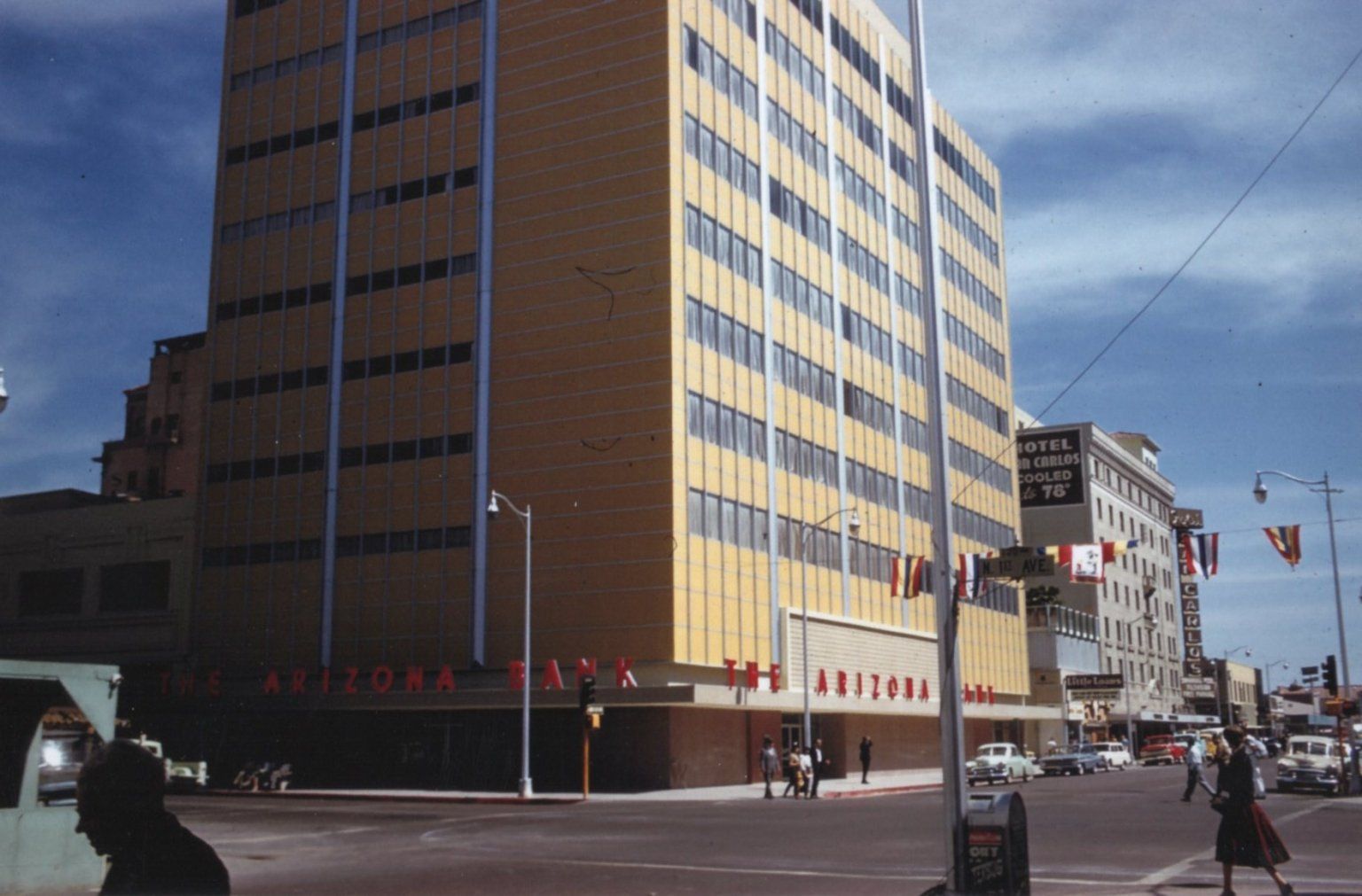Investing in Downtown Phoenix's Future: The Bank of Douglas
In the late 1950s, about the time Downtown Phoenix started its decline as the city’s main shopping location, a young financier decided to build up its financial infrastructure. David Murdock, who would later move to Los Angeles and become a billionaire developer, purchased the Bank of Douglas building at Monroe Street and First Avenue. The two-story structure, designed by Lescher and Mahoney, was constructed in 1947.
Murdock contracted with the Henry C. Beck Co. to add eight stories to the building. The bank remained open and even managed to host a display of rare orchids during construction in 1959. The Beck Co. followed architect Charles Polacek’s plans, creating an addition of porcelain steel and glass walls. Before work could commence, 600 tons of gunite were poured to reinforce the foundation. Alfred Hitchcock captured the building’s construction on film in the opening shot of his movie Psycho.
Construction of the $3 million, 111,000-square-foot building was completed in 1960. By the time it was finished, it had a new name, “Arizona Bank,” which better conveyed the institution’s statewide operations. This name change was despite objections by the Southern Arizona Bank & Trust Co. that the names were deceptively similar. The building’s grand opening revealed a lobby décor focused on seven Arizona Bank kachinas created by the Hopi Tribe.

The roof featured “The Arizona Bank Skyline Weather Forecaster,” which used colors and motion to provide temperature and precipitation predictions. White at the top of the tower indicated fair weather, green indicated expected precipitation, and yellow meant cloudy skies. Red bands signified temperature trends: stripes climbing the spire represented increasing temperatures, and descending red bars meant decreasing temperatures.
Neither the bank nor the building survived. In 1976, Arizona Bank moved to a 31-story International-style building across the street at 101 North First Avenue, occupying 10 levels. Six years later, the financial institution was acquired by Security Pacific Bank, which merged with Bank of America in 1992.
The original Arizona Bank building at Monroe and First Avenue housed new tenants over the years, including the Phoenix Metropolitan Chamber of Commerce in 1977 and a Mountain Bell Phone Center Store in 1978. The building had been vacant for some time before redevelopment started in 2004.

Grace Communities planned to convert the building into the Monroe Place Lofts residential condominiums and began stripping it to its steel frame. However, the building’s 60 units sold so quickly that the developers canceled the remodel and razed the remaining structure. Grace Communities then built 44 Monroe, a 34-story residential high-rise at the site, which was completed in 2008.
Meanwhile, Murdock moved to Southern California in 1965. By the mid-1980s, his holdings included International Mining, Occidental Petroleum, and Dole Foods. At age 100, Murdock is still going strong as a billionaire businessman, philanthropist, and advocate for a plant-based diet.
Douglas C. Towne is the editor of Arizona Contractor & Community magazine, www.arizcc.com